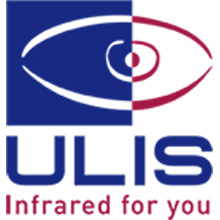 |
| ULIS announces the investment to meet the increasing IR technology demand |
ULIS, a manufacturer of high quality infrared (IR) imaging sensors for thermography, security and surveillance, automotive and military applications, announced recently on its tenth year anniversary a EUR 20 million investment in a new state-of-the-art facility to meet increasing market demands for IR technology.
According to the Yole Developpement report “Uncooled Infrared Imaging: Commercial & Military Applications”, sales of uncooled IR cameras will grow from 320,000 units in 2011 to 1.1 million units in 2017. Figures also show that the market share for uncooled IR imagers for commercial applications will represent more than 80 per cent of the total uncooled IR imaging market, with the slice for military applications shrinking from around 30 to 15 per cent.
”Since ULIS’ creation ten years ago, we have taken strategic technological and development steps to enable the company to capture more and more of the uncooled IR imaging market,” said Jean-François Delepau, managing director at ULIS. “We have always aimed to be at the forefront of new IR market developments. This EUR 20M investment in a new state-of-the art IR sensor facility is another major step in our growth. In particular, the investment will go a long way in boosting our penetration into emerging high volume market areas, such as automotive and low-resolution sensors, and in giving us a substantial lead. Thanks to the new facility, our customers will greatly benefit from the new advances in the performance of our IR sensors, giving their IR products a competitive edge in the highly price-sensitive commercial market.”
For the first time, ULIS will introduce to the market a series of low cost IR sensors through the new facility. These high-volume, low cost IR sensors will use new packaging technologies, such as Pixel Level and Wafer Level Packaging technologies (PLP and WLP). PLP and WLP technologies involve packaging an IR chip at wafer level rather than using the traditional method of assembling the package of each individual chip after wafer dicing. In addition to making the resulting packaged IR chip more compact and robust, it is a time-saving process.
Equally important, the new facility will allow ULIS to move production from 150mm silicon CMOS wafers to the advanced 200mm silicon CMOS wafer. In doing so, ULIS will introduce a new product line aimed at filling a gap in the supply for low image resolution IR sensors needed by applications such as enhancing energy efficiency of heating/cooling systems or detecting people, among others.
“The future in IR sensors will be towards greater integration and compactness. Over the last ten years, we’ve grown successfully in that direction and as a result have become established as a key player in the market for uncooled IR sensors,” said Jean–Luc Tissot, technical director at ULIS. “The new facility will give ULIS access to an advanced class of CMOS and packaging technologies that we’ll be able to exploit, without interrupting production of our existing pro and elite product lines. The new facility puts us in a strong position to bring future developments in IR to our customers.”
The shift to 200mm CMOS wafers will mean that ULIS will have a greater capacity to integrate additional functions onto its IR chips, thereby reducing the complexity in using IR technology. This could include adding more memory for voltage reading, for example, so that less tuning is required. By integrating functions, ULIS foresees it will make IR technology simpler and more accessible for imaging system designers and camera makers to adopt in commercial applications.
Founded in 2002, ULIS is currently ranked number two worldwide for uncooled IR sensors delivered. The company began operations with 35 employers and one product. Ten years later, it has grown to 140 staff with two product lines covering a wide range of applications from thermography to the automotive market. ULIS has experienced double-digit compound growth each consecutive year, with the exception of 2009. Revenues reached EUR 45 million in 2011.
The company has also been involved in certain landmarks. For example, it was among one of the first to deploy its IR sensors in cameras used to conduct health checks at Asian airports during the 2003 SARS outbreak. Today, its products include military-grade IR sensors that are used in handheld goggles, thermal cameras for ground vehicle situation awareness, such as on the Nexter Infantry Fighting Vehicle deployed in Afghanistan and other military gear.
In addition, ULIS has accomplished a steady reduction in the pixel pitch size of its IR imaging sensors. This went from 45-micron to 35-micron in 2003 and then from 25-micron to 17-micron by 2009. ULIS’ 17-micron 1024 x 768 IR imaging sensor is the largest uncooled IR sensor format available. It doubled the number of pixels in the array over earlier IR models.
Currently, 12-micron pixel pitch uncooled IR sensors are under development at ULIS. The company works in close collaboration with the CEA-Leti, a leading European micro- and nanotechnologies R&D centre, in developing its products and technology.


















